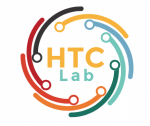After we finalized our method of data capture for future events, it was time to look at quantifying events from the previous year. GWIC kicked off its formal events and coursework in 2018. From that year, they created an annual report to summarize the progress and room for growth the following year. I read the annual report when I first started volunteering with GWIC to get a basic understanding of the work that they do and what their reach was. GWIC uses their classes and events in order to engage with students, in the hopes of having a consistent audience of students, faculty, and interested professionals. The various social impact projects, courses, and events are described in great detail. This report also details the creation of its website and presence on various social media. All of these components are great and make up a promising start of a new, developing center on campus. While these aspects within the report are impressive, what the report lacked were hard numbers of how many students engaged with GWIC through these various methods.
Upon reading the report, I had some questions about the number of students impacted by this center’s work. I worked with Erica Wortham, my supervisor, in order to craft my questions to better suit their research interest and to shed light on the progress they have made from last year to this year. We dug through various documents in their hub to see if there were any rosters of those who attended events that year. For the courses they offered in 2018, we easily were able to pull those and record the number of students reached through these classes. We had breakdowns by the school and major the students who took the course were in. This was one of our easiest, straightforward finds. Hopefully, that data will help them when it comes to promoting this class in future semesters, especially accordingly by department. We found that majority of students who took GWIC’s classes were in GW’s School of Engineering and Applied Science (SEAS). We can use this data to further market the class to SEAS students, or focus the outreach to other schools within GW. When it came to the number of students in all events at GWIC, this was a harder thing to track down. During 2018, GWIC’s data capture was minimal and they did not consistently record attendance at their events. We had number of the total workshop events held that year. From that number, enrollment estimates were made for each event. We had a rough number of those who attended workshops that year. We used this method for a variety of types of events that were held at GWIC. Social impact projects are easier to get hard numbers on, as some of these projects are still ongoing and these students are very involved with GWIC. When it came to classes and social impact projects it was easier to find, but overall event attendance was much more difficult without having an organized data capture previously.
We are now drafting questions to understand social media engagement and how that has changed from 2018 to 2019. I’m working with their social media fellow to draft those questions. Below, I’ll be including our key questions, some we have answered and others we are still finding the answers for.
Workshops
- How many people attended workshops last year?
- How many total workshops were held?
Social Events
- How many social events occurred? How many attended?
Social Impact Projects
- How many students were taking the course ‘SEAS Social Impact Design Thinking’ and the ‘Innovation Module’ and from which majors? Of those students, what are their majors/graduating years? Is there a significance of students who come in freshman/sophomore vs junior/senior?
Social Impact Projects
- How many students engaged with the innovation center through social impact projects?
- How many social impact projects were hosted through GWIC?
- How many students continued to stay engaged in Fall 2019?
- The majority of students who engage with the student centers are from what department?
- What impacts the students more, curriculum development or social impact projects?
- How do we categorize engagement? Participation in events?
Jasmine Sami
Human-Technology CRT, Year 1
- Social media analytics for GWIC - December 10, 2019
- Quantifying past data at GWIC - November 25, 2019
- Data capture for GWIC - November 13, 2019
